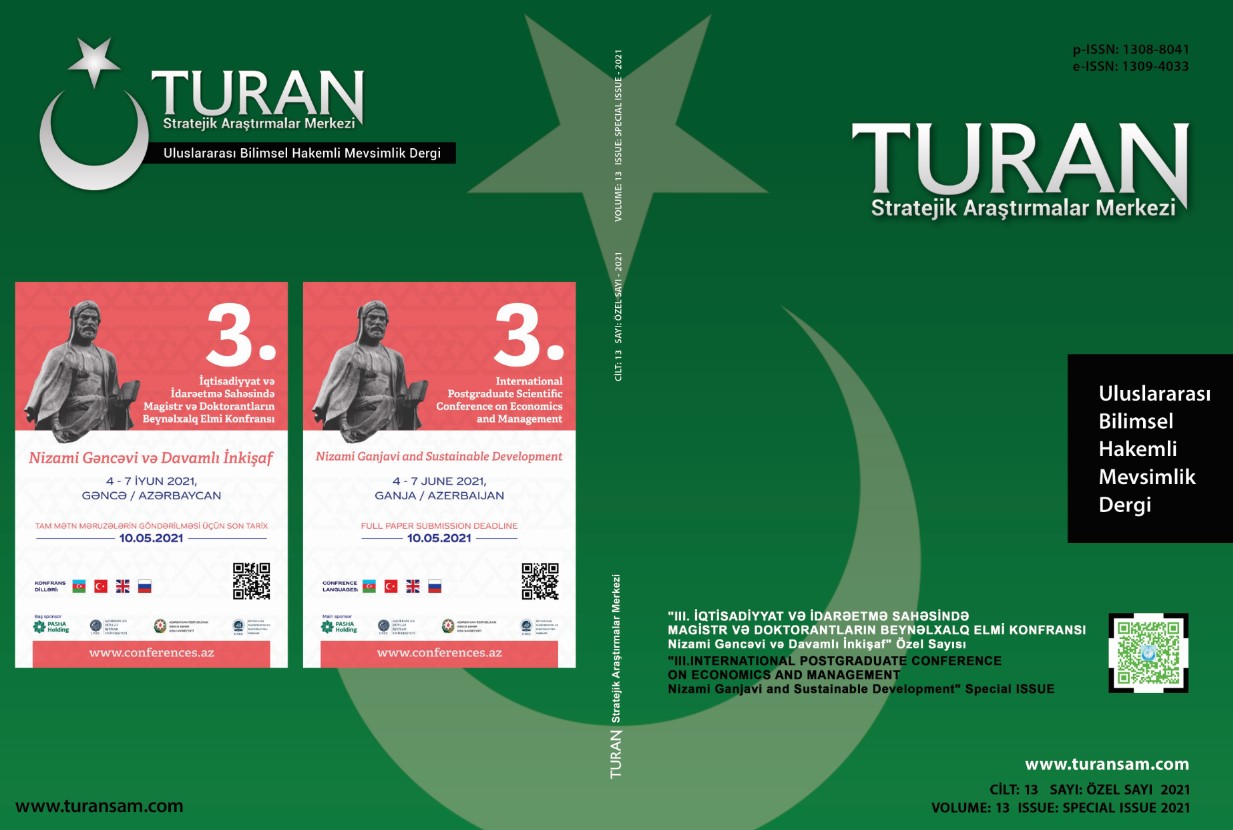BÖLGESEL KALKINMA KÜME MODELİ: YUKARI KARABAĞ VE KALBACAR-LAÇIN EKONOMİK BÖLGELERİ ÖRNEĞİND
CLUSTER MODEL OF REGIONAL DEVELOPMENT: ON THE EXAMPLE OF UPPER KARABAKH AND KALBAJAR-LACHIN ECONOMIC REGIONS
Author(s): Fərrux RəhimovSubject(s): Business Economy / Management, Agriculture, Regional Geography, Economic development, Tourism
Published by: Sage Yayınları
Keywords: Cluster; agro-park; Upper Karabakh; Kalbajar-Lachin; agribusiness; tourism;
Summary/Abstract: After gaining independence for the second time, many steps have been taken to develop the regions in Azerbaijan, and state programs have been implemented. These reforms and programs will, of course, be implemented in the liberated Upper Karabakh and Kalbajar-Lachin economic regions. This article examines the main features of the clustering model, which has been successfully used as a model of regional development in recent years, especially in developed countries, and explores the application of this model in the region. The main feature of the cluster model is the voluntary grouping of other stakeholders who produce the same or similar products, provide various services related to this production, conduct research, mediate and supply, and promote regional specialization. Although the history of scientific ideas related to clustering goes back to the research of economists such as A. Smith and A. Marshall, this model began to be studied more in 1990, mainly after the works of M. Porter. One of the important features of the model, which can be applied in all sectors of the economy, is that the private sector plays a central role here and is based on close cooperation with the public and non-governmental sectors. One of the biggest steps taken towards clustering in our country (although at the expense of the state budget and as a state enterprise) is the creation of agroparks and the establishment of an SME cluster company, as well as the existence of special items in many government programs with clustering. Our research has shown that clusters for agribusiness and tourism can be established here, taking into account many features of the liberated areas. Some issues to be considered in this regard are reflected in the article in the form of proposals.
Journal: TURAN-SAM
- Issue Year: 13/2021
- Issue No: Sp. Issue
- Page Range: 170-178
- Page Count: 9
- Language: Azerbaijani

